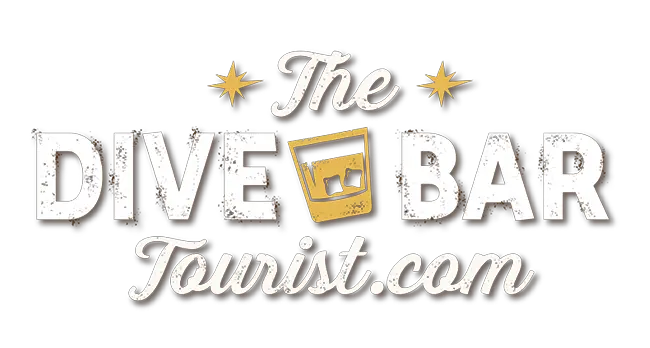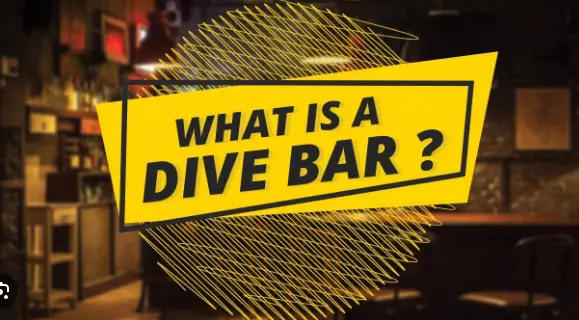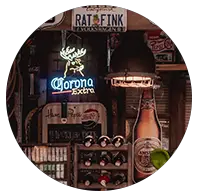Dive bars have been a fixture of American culture for decades, with a reputation for being gritty, unpretentious, and affordable. But what exactly makes a bar a “dive”? While there’s no one-size-fits-all answer, there are a few key characteristics that tend to define these beloved establishments.
First and foremost, dive bars are known for their lack of pretension. You won’t find any fancy cocktails or craft beers here; instead, you’ll be served cheap beer in a can or a bottle. The decor is often minimal, with little effort put into creating a “theme” or aesthetic. And the clientele is diverse, ranging from regulars who have been coming for years to curious newcomers looking for a taste of local flavor. Despite the lack of frills, dive bars often have a certain charm that keeps people coming back for more.
What Is a Dive Bar
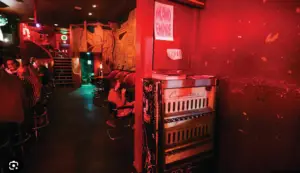
what is a dive bar mean
A dive bar is a type of drinking establishment that is typically small, unpretentious, and often run-down. These bars are known for their authenticity and character, and they are often frequented by locals and regulars.
Dive bars are often characterized by their lack of frills and their low prices. They may not have fancy decor or expensive drinks, but they make up for it with a laid-back atmosphere and a sense of community.
While some people may view dive bars as seedy or unsafe, others see them as a place to let loose and be themselves. These bars often attract a diverse crowd, and they can be a great place to meet new people and make friends.
Overall, a dive bar is a place where people can go to have a good time without breaking the bank. They may not be the most glamorous or upscale establishments, but they offer a unique experience that can’t be found anywhere else.
The History of Dive Bars
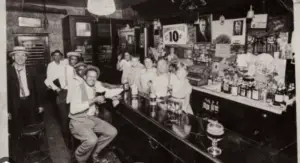
The History of Dive Bars
Dive bars have a long and storied history in American culture. These establishments are typically small, unassuming, and often located in working-class neighborhoods. They are known for their cheap drinks, dim lighting, and rough around the edges atmosphere.
The origins of dive bars can be traced back to the Prohibition era of the 1920s and 30s. During this time, many bars were forced to close due to the ban on alcohol sales. However, some enterprising individuals found ways to keep their establishments open by operating them as speakeasies. These illegal bars were often located in basements or back rooms and required a secret password to gain entry.
After Prohibition was repealed in 1933, many of these speakeasies continued to operate as dive bars. These establishments were often frequented by blue-collar workers and other individuals who were looking for a cheap drink and a place to unwind after a long day.
In the post-World War II era, dive bars began to take on a new form. Roadhouses and honky-tonks, which were typically located on the outskirts of town, became popular destinations for travelers and truck drivers. These establishments were known for their live music, dancing, and rowdy atmosphere.
Today, dive bars continue to be an important part of American culture. While many of the original speakeasies and roadhouses have closed, new dive bars continue to open up in cities and towns across the country. These establishments provide a unique and authentic experience that cannot be found in more upscale bars and nightclubs.
Characteristics of a Dive Bar
Dive bars are typically known for their unique characteristics that set them apart from other bars. These establishments have a certain charm that attracts a particular type of clientele. In this section, we will explore the key characteristics of a dive bar.
Ambiance and Decor
Dive bars are often characterized by their dim lighting, neon beer signs, and worn-out decor. The floors may be sticky, and the walls may be covered in graffiti. These bars often have an unpretentious and gritty feel that appeals to those looking for a more authentic bar experience. The decor may be outdated or even tacky, but it adds to the charm of the establishment.
Clientele and Service
Dive bars are known for their regulars and locals. These bars often attract a diverse crowd, including blue-collar workers, artists, and college students. The bartenders are often friendly and may even know their regulars by name. However, service may not always be quick, and the atmosphere can be rowdy at times.
Drink Selection and Pricing
Dive bars typically have a limited drink selection, with a focus on beer and whiskey. The prices are often cheap, and cash is the preferred method of payment. Domestic beer is a staple in most dive bars, and the whiskey selection may be limited but affordable. These bars are not known for their craft cocktails or high-end wines, but rather for their cheap and straightforward drink options.
In conclusion, dive bars have a unique charm that attracts a particular type of clientele. They are often characterized by their dim lighting, worn-out decor, diverse clientele, friendly bartenders, limited drink selection, and affordable pricing.
The Role of Dive Bars in Communities
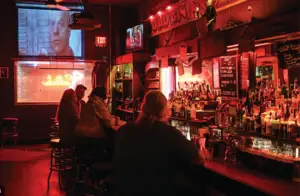
The Role of Dive Bars in Communities
Dive bars play an important role in many communities, particularly those with a working-class or blue-collar demographic. These bars often serve as a gathering place for locals and regulars, providing a sense of community and belonging.
For many people, the dive bar is a place where they can unwind after a long day at work or catch up with friends and family. Unlike more upscale bars and restaurants, dive bars tend to have a more relaxed and casual atmosphere, which can be appealing to those who are looking for a low-key night out.
In addition to providing a social outlet for locals, dive bars can also serve as an important economic driver for the community. Many of these bars are family-owned and operated, and they rely on the support of regulars to stay in business. By patronizing these establishments, locals can help to support small businesses and keep money circulating within the community.
Overall, dive bars play an important role in the social and economic fabric of many communities. Whether you’re a regular or just passing through, these establishments offer a unique and authentic experience that is hard to find elsewhere.
Famous Dive Bars
Dive bars are often known for their unique atmosphere, cheap drinks, and unpretentious vibe. Here are a few famous dive bars that have become popular among locals and tourists alike.
The Earl
Located in Atlanta, Georgia, The Earl is a dive bar and music venue that has been around since 1999. It’s known for its laid-back atmosphere, cheap drinks, and live music. The bar is a favorite among locals and has hosted many famous musicians over the years.
Austin’s Favorites
Austin, Texas is known for its vibrant music scene and dive bars are a big part of that culture. Some of the most popular dive bars in Austin include The White Horse, The Lost Well, and The Skylark Lounge. Each of these bars has its own unique vibe and attracts a diverse crowd of locals and tourists.
Check Also BEST DIVE BARS IN AUSTIN
Brooklyn’s Best
Brooklyn, New York is home to many dive bars that have become cultural landmarks. Some of the most famous include The Turkey’s Nest, Lucky Dog, and Brooklyn Ice House. These bars are known for their cheap drinks, laid-back atmosphere, and friendly staff.
Pittsburgh’s Picks
Pittsburgh, Pennsylvania has its fair share of dive bars as well. Some of the most popular include Dee’s Cafe, Gooski’s, and Jack’s Bar. These bars are known for their cheap drinks, friendly staff, and unique atmosphere.
Overall, dive bars are a great way to experience the local culture and get a taste of the city’s nightlife. Whether you’re a local or a tourist, these bars offer a unique and authentic experience that’s hard to find anywhere else.
The Evolution and Gentrification of Dive Bars
Dive bars have a rich history in the United States, with their origins dating back to the early 19th century. These bars were once considered to be the epitome of American drinking culture, with their cheap drinks, dim lighting, and gritty atmosphere. However, over the years, dive bars have undergone a significant transformation, with many of them becoming gentrified and catering to a new, more upscale clientele.
One of the main factors contributing to the gentrification of dive bars is the rise of craft beers. As more and more people have become interested in unique and high-quality beers, many dive bars have started to stock a wider variety of craft beers, often at higher prices. This has attracted a new, more affluent clientele who are willing to pay more for a unique drinking experience.
Another factor contributing to the gentrification of dive bars is the internet. With the rise of social media and online review sites, it has become easier for people to find and share information about different bars and drinking establishments. This has led to a proliferation of trendy, upscale bars that cater to a more discerning clientele.
Despite these changes, many dive bars continue to maintain their gritty, no-frills atmosphere. While they may have added a few craft beers to their menu or updated their decor, they still offer the same cheap drinks and laid-back vibe that they always have. However, as more and more dive bars become gentrified, it remains to be seen whether this trend will continue or if the dive bar will eventually become a relic of a bygone era.
The Cultural Significance of Dive Bars
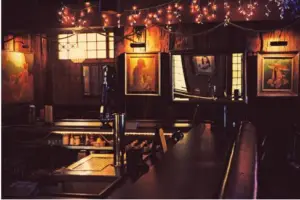
The Cultural Significance of Dive Bars
Dive bars have been a part of drinking culture for decades. They are known for their cheap drinks, dim lighting, and gritty atmosphere. However, dive bars hold a deeper cultural significance beyond just being a place to grab a drink.
For many, dive bars evoke feelings of nostalgia and memories of simpler times. They often serve as a refuge from the fast-paced, modern world. The familiar surroundings and friendly faces can provide a sense of comfort and belonging.
Dive bars have also become a part of the lexicon of writers and artists. They have been featured in songs, movies, and novels as a symbol of the working-class lifestyle. The album “Born to Run” by Bruce Springsteen is a prime example of this. The title track includes the lyrics “Baby this town rips the bones from your back, it’s a death trap, it’s a suicide rap, we gotta get out while we’re young. ‘Cause tramps like us, baby we were born to run.” This song and album are widely regarded as a tribute to the working-class and the dive bars they frequent.
Overall, dive bars are an important part of drinking culture and hold a special place in the hearts of many. Whether it’s the memories they evoke, the sense of community they provide, or their cultural significance, dive bars will continue to be a staple in the drinking scene.
Conclusion
Dive bars have a long-standing reputation for being gritty, unpretentious, and affordable. They are often frequented by locals who are looking for a place to unwind, have a drink, and socialize with friends. While dive bars may not have the same level of luxury or sophistication as other establishments, they offer a unique atmosphere that cannot be found anywhere else.
In conclusion, dive bars are an important part of the bar scene. They provide a casual and relaxed environment where people can come together to enjoy a few drinks and good company. Whether you’re looking for a place to watch the game or just hang out with friends, dive bars offer a unique experience that is hard to replicate in other settings. So, the next time you’re looking for a place to grab a drink, consider checking out a dive bar in your area. You never know what kind of memories you might make.
